Barbarians, Bishops, and Byzantines: the 500 years of chaos and death after the fall of Rome
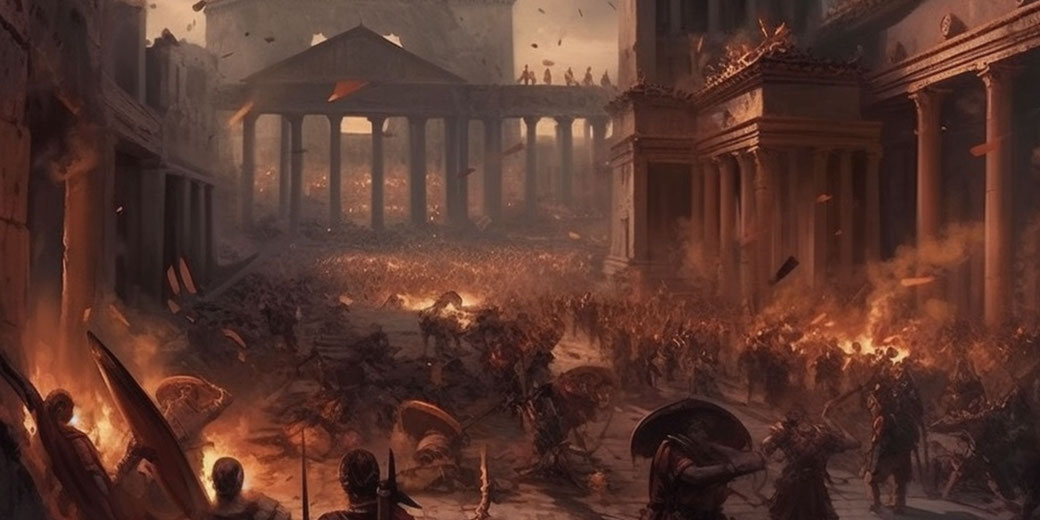
In the dim light of a fading empire, Rome, the Eternal City, met its mortal end in 476 AD. This mighty civilization, which had once stretched its powerful limbs across the vast expanses of Europe, North Africa, and West Asia, was abruptly unseated from its throne, and the world was plunged into an era of uncertainty and transformation.
The fall of Rome marked not merely the end of an empire, but the start of an entirely new epoch. It was an era that would breed kingdoms from the ashes of antiquity and foster new forces that would forever change the course of human history.
But what really happened in the wake of Rome's fall?
How did Europe, devoid of its unifying hegemon, navigate the uncharted waters of a post-Roman world?
How did new powers rise from the rubble?
And perhaps most intriguingly, how does this tumultuous era continue to shape our world today?
Why did Rome fall?
The Western Roman Empire, a beacon of civilization and power, met its long-foreshadowed end in the year 476 AD, marking the symbolic terminus of antiquity and the dawn of the Middle Ages.
The precise reasons for Rome's fall are both complex and widely debated among historians, but several key factors contribute to the popular narrative.
The Empire had been suffering from a severe economic crisis, exacerbated by constant wars, over-reliance on slave labor, and an overextended military.
Economic instability led to hyperinflation, devaluation of currency, and a reduced capacity to maintain Rome's vast infrastructures, including roads, aqueducts, and public buildings.
Moreover, overpopulation and subsequent food shortages put additional strain on the already crumbling empire.
Rome's political structure, too, had become unstable. Emperors were often selected by the military and not based on hereditary succession, leading to frequent power struggles and civil wars.
Corruption was rampant, and loyalty to the empire was waning. In the century leading up to the fall, the Empire was divided into two halves, each with its own Emperor, further diluting the power and prestige of the Roman leadership.
Perhaps the most visible and dramatic contributors to Rome's fall, however, were the Barbarian invasions. Various Germanic tribes—Goths, Vandals, Lombards, and others—had been pressing on the Empire's borders for centuries.
Rome had often managed to repel these invasions or integrate the invaders into their society. However, the pressure increased significantly in the 4th and 5th centuries, as the Huns from Asia pushed these Germanic tribes into Roman territories.
Rome was sacked by the Visigoths in 410 and again by the Vandals in 455 - these were serious blows to the morale and prestige of the Empire.
Finally, in 476 AD, Odoacer, the Germanic king of the Torcilingi, deposed Romulus Augustulus, the last Roman emperor in the West.
Odoacer did not claim the title of Emperor for himself; instead, he formally acknowledged the suzerainty of the Eastern Emperor.
With that, the curtain fell on the Western Roman Empire, plunging Europe into centuries of tumultuous change.
The migration of barbarian groups into Europe
The Migration Period, also referred to as the Barbarian Invasions, was a tumultuous era in Europe's history marked by significant demographic changes, reconfiguration of borders, and shifts in power.
Taking place roughly between the 4th and 8th centuries, it was a time when various Germanic, Slavic, and other tribes moved across and settled within Europe, driven by factors such as climatic change, pressure from other groups such as the Huns, and the lure of Rome's weakening power.
The impact of the Huns cannot be overstated. Emerging from the steppes of Central Asia, their westward push in the late 4th century forced many Germanic tribes into the boundaries of the Roman Empire.
Their appearance on Europe's horizon was a catalyst for the major population movements of this period.
The Visigoths, seeking refuge from the Huns, were initially allowed to settle within the Empire’s borders, but conflict and mistreatment led to rebellion, culminating in the sack of Rome in 410.
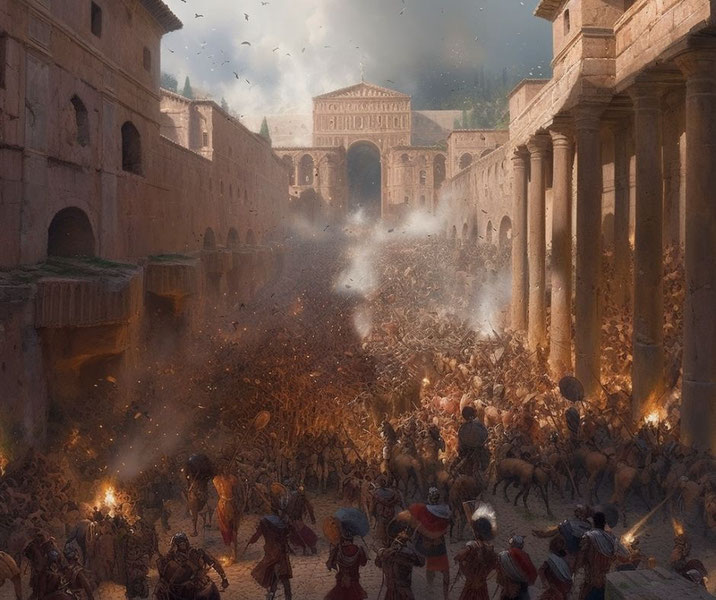
The Vandals, another tribe displaced by the Huns, carved their own path across Europe. Crossing the Rhine into Gaul, they moved south into the Iberian Peninsula before crossing the Strait of Gibraltar, eventually establishing a kingdom in North Africa.
Their sack of Rome in 455 further underscored the disintegration of Roman power.
Meanwhile, the Angles, Saxons, and Jutes moved into Britain, gradually pushing the native Celtic tribes to the western and northern fringes of the island.
This resulted in the establishment of Anglo-Saxon rule and the early English kingdoms.
In the wake of the Western Roman Empire's fall, the Ostrogoths, led by their king Theodoric, settled in Italy, establishing a kingdom that attempted to preserve Roman institutions and culture.
The Lombards would later invade and establish their own kingdom in Italy.
What powers took control after Rome's fall?
In the aftermath of the fall of the Western Roman Empire, the landscape of Europe was forever altered.
The power vacuum left by Rome's dissolution resulted in a period of considerable flux, as various factions vied for dominance.
This era, known as the Early Middle Ages or the Dark Ages, was marked by a fragmentation of political power, shifting borders, and the emergence of new cultural and political identities.
The Barbarian Kingdoms, comprised of various Germanic tribes such as the Goths, Vandals, Lombards, and Franks, began to establish themselves in former Roman territories.
These new kingdoms, however, did not simply erase the Roman legacy. Instead, they often co-opted Roman institutions and blended them with their own Germanic customs.
For instance, the Ostrogoths in Italy, the Visigoths in Spain, and the Vandals in North Africa all continued to use Roman law and administrative systems.
A particularly notable example is the kingdom of the Franks, under the Merovingian dynasty.
Clovis I, the first King of the Franks to unite all of the Frankish tribes under one ruler, converted to Christianity and established a relationship with the Bishop of Rome, further integrating Roman influences into his rule.
This alliance with the Church set a crucial precedent for the symbiosis between political and religious authority in medieval Europe.
Meanwhile, the Eastern Roman Empire, later known as the Byzantine Empire, continued to thrive.
It preserved many aspects of the old Roman Empire, including its administrative structures, legal codes, and Christian religion, which further developed into what we now know as Eastern Orthodoxy.
The Byzantines saw themselves as the rightful successors to Rome, maintaining the use of Roman titles, Roman law, and presenting themselves as a beacon of civilization amid a sea of 'barbaric' Germanic kingdoms.
In the British Isles, the situation was somewhat different. The withdrawal of Roman forces around 410 AD had left the region open to invasion from various groups, most notably the Angles, Saxons, and Jutes from what is now Denmark and northern Germany.
These invasions led to the establishment of a series of Anglo-Saxon kingdoms, which would eventually coalesce into the Kingdom of England.
The rise of the church as a unifying force
In the vacuum of power left by the fall of Rome, one institution not only survived but also flourished and extended its influence across Europe - the Christian Church.
The rise of the Church during the Early Middle Ages marked a profound shift in the landscape of spiritual, cultural, and political power in Europe, setting the stage for its dominant role in the centuries to come.
From its humble beginnings as a persecuted faith in the Roman Empire, Christianity had gradually woven itself into the fabric of the Roman state, culminating in Emperor Constantine's Edict of Milan in 313 AD which granted it legal status, and Emperor Theodosius I making it the state religion of the Roman Empire in 380 AD.
With the decline and fall of the Roman Empire, the Church found itself as the preserver of Roman literary, legal, and administrative traditions.
The Bishop of Rome, or the Pope, began to claim primacy over other bishops, asserting the Church's independence and authority.
The concept of Petrine Supremacy, arguing that the Pope was the successor of Saint Peter to whom Jesus gave the keys to the Kingdom of Heaven, bolstered these claims.
As the political structures of Rome disintegrated, the Church filled the void, providing stability and order amid chaos.
The monastic movement also played a crucial role in the Church's rise. Monasteries, adhering to rules like the Benedictine Rule established by St. Benedict in the 6th century, became vital centers of learning, literacy, and culture, preserving classical knowledge through the painstaking transcription of texts.
These monastic communities also played a vital role in the conversion of Europe's pagan peoples to Christianity, helping to extend the Church's spiritual and cultural influence.
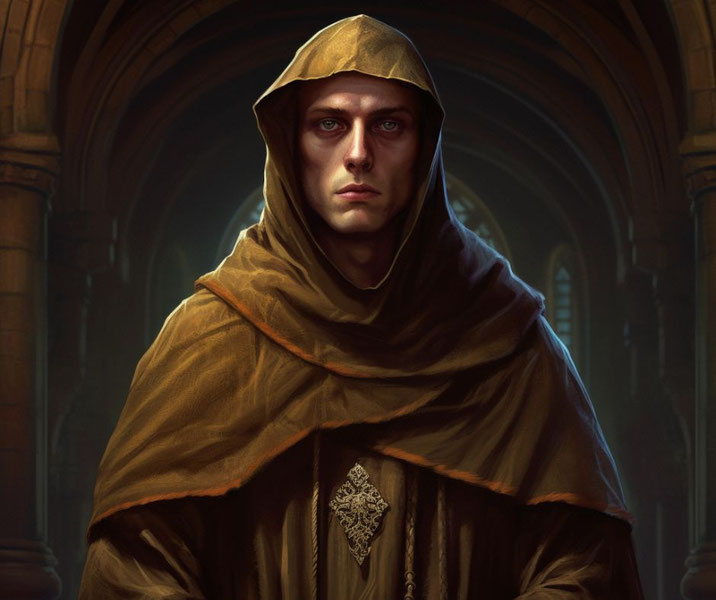
The alliance between the Church and the emerging Germanic kingdoms also significantly contributed to its ascendancy.
The conversion of Clovis, the Frankish king, to Christianity in the late 5th century, symbolized a crucial moment in the Church's history.
This alliance established a model of a Christian kingship, where secular rulers received spiritual validation from the Church, and the Church received protection and patronage in return.
The rise of the glorious Byzantine Empire
While the Western Roman Empire crumbled under the weight of its own decay and external pressures, the Eastern Roman Empire, known to us as the Byzantine Empire, carried on.
This empire, with its capital in Constantinople (modern-day Istanbul), continued to uphold the mantle of Roman law, culture, and administrative practices, and was thus a vital conduit through which the heritage of Rome was passed on to the Middle Ages and beyond.
The Byzantine Empire was not merely a passive preserver of the past; it was an active, evolving entity that developed its own unique identity.
Its cultural life was a vibrant fusion of Roman, Greek, and Christian influences. In terms of architecture, the crowning achievement was the Hagia Sophia, built under Emperor Justinian.
This architectural marvel was the largest cathedral in the world for nearly a thousand years and served as a symbol of the Byzantine Empire's grandeur and sophistication.
Under the rule of Justinian I in the 6th century, the Byzantine Empire embarked on a significant period of reconquest.
Justinian aspired to revive the Empire's fortunes by re-establishing control over the western provinces lost to the Germanic kingdoms.
His armies, led by his talented general Belisarius, managed to reconquer vast territories, including North Africa, Italy, and part of Spain.
Though these gains proved difficult to hold in the long run, Justinian's ambitions underscored the Byzantine Empire's continued influence and aspiration to uphold Rome's legacy.
Another significant achievement of Justinian's reign was the codification of Roman law.
The Corpus Juris Civilis, compiled under his directive, preserved and systematized centuries of Roman legal thought.
This monumental work would later form the foundation of many legal systems in Europe and continues to influence modern law.
Despite the numerous pressures it faced, including conflicts with Persians, Arabs, Turks, and Crusaders, the Byzantine Empire persisted for nearly a thousand years after the fall of its western counterpart.
Its religious and cultural influence was profound, particularly in the realm of Orthodox Christianity, which it spread to Slavic lands, including Russia.
Even after the fall of Constantinople to the Ottoman Turks in 1453, the legacy of Byzantium continued to shape the course of European history.
The birth of Islam: a competing monotheistic faith
In the 7th century, while Europe was undergoing the tumultuous transformations of the Early Middle Ages, a new religious and political force was born in the Arabian Peninsula: Islam.
This emergence would not only reshape the Arabian society but would also rapidly spread, leaving a profound and enduring impact on the world, including the territories of the former Roman Empire.
Islam began with the prophetic mission of Muhammad in the city of Mecca around 610 AD.
Born into the Quraysh tribe that controlled Mecca, Muhammad began preaching about revelations he received from God, later compiled into the Quran, the holy book of Islam.
His teachings, emphasizing monotheism and moral and social reform, attracted a growing following but also opposition from Mecca's established powers.
The opposition to Muhammad and his followers culminated in their migration, or Hijra, to the city of Medina in 622 AD, marking the beginning of the Islamic calendar.
In Medina, Muhammad became both a spiritual and political leader, uniting the various tribes under the banner of Islam.
Upon Muhammad's death in 632 AD, the leadership of the Muslim community passed to his successors, known as caliphs. Under the first four caliphs, known as the Rashidun, or "rightly guided" caliphs, the Islamic state expanded rapidly.
Within a century of Muhammad's death, Muslim armies had conquered vast territories, including the Persian Sassanid Empire and significant portions of the Byzantine Empire, extending their rule over Persia, the Levant, North Africa, and even reaching Spain in the west.
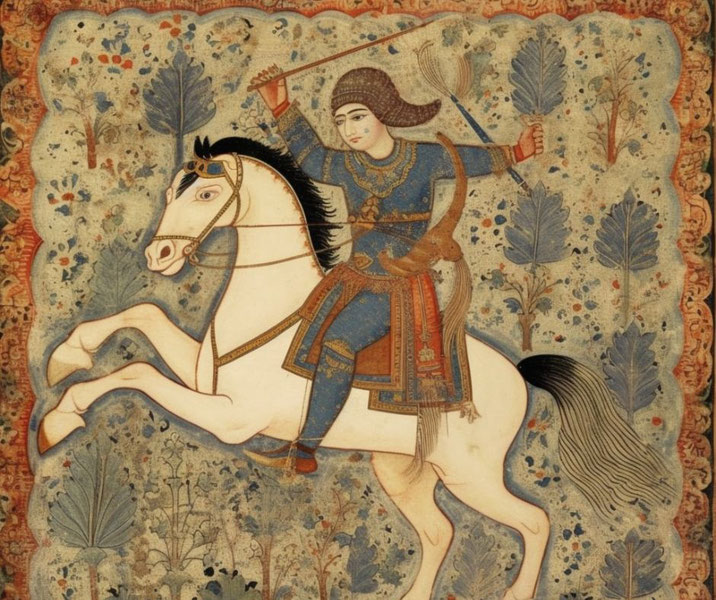
This rapid expansion of Islamic power marked the beginning of a new political and cultural era.
Many of the regions Islam expanded into were parts of the former Roman Empire and were predominantly Christian at the time of Muslim conquest.
While non-Muslims were allowed to maintain their faith under Islamic rule, many gradually converted to Islam over the centuries due to a variety of factors, including the appeal of its teachings and the social and economic advantages conversion offered.
The emergence of feudalism
Feudalism, a system of political and military relationships between lords and vassals, was a defining characteristic of the medieval period in Europe.
Its birth and rise in the wake of Rome's fall were directly linked to the sociopolitical transformations of the Early Middle Ages and the shifting balances of power during this era.
Feudalism emerged as a response to the instability and insecurity that followed the fall of the Western Roman Empire.
With central authority weakened and threats from Viking, Magyar, and Muslim invaders looming, the need for local protection and security gave rise to a system of reciprocal obligations and loyalties between lords and their vassals.
At the core of feudalism was the fief, a grant of land, which a lord provided to his vassal in exchange for military service.
The vassal pledged his loyalty and service to the lord, becoming his man, in a ceremony known as "homage."
This relationship wasn't merely a contractual agreement but also a bond of personal loyalty and mutual obligation.
Over time, this system became more complex and hierarchical. At the top of the feudal pyramid was the king, who was seen as a lord who granted lands to his vassals, who in turn could have their own vassals.
At each level, the lord-vassal relationship was cemented by the exchange of land for loyalty and military service.
This system provided a semblance of order and stability in a time when centralized authority was weak or nonexistent.
The Church also played a crucial role in the feudal system. Bishops and abbots often acted as lords, holding vast lands and vassals.
Moreover, the ideological endorsement of feudal relationships by the Church gave the system a moral and spiritual dimension, reinforcing its stability and acceptability.
Feudalism had a significant impact on society, economy, and politics. It led to the decentralization of power and promoted a predominantly agrarian economy.
It also entrenched social hierarchies and the notion of inherited status, which were defining characteristics of medieval society.
However, it's essential to note that the feudal system was not uniform across Europe and evolved differently in various regions.
Also, historians often debate its origins, structures, and impacts due to the system's complexity and variability.
The Viking, Magyar, and Saracen Invasions
The period after the fall of Rome was not merely a time of political and cultural transformation; it was also an era of significant upheaval and conflict, characterized by a series of invasions and migrations.
The Viking, Magyar, and Saracen invasions were among the most disruptive and influential of these, reshaping the landscape of Europe and contributing to the socio-political developments of the era.
Vikings, seafaring warriors and traders from Scandinavia, launched a series of raids and expeditions across Europe from the late 8th to the early 11th century. Their attacks were swift and brutal, striking coastal regions and even inland through major river routes.
They targeted monasteries, towns, and even cities, leaving destruction in their wake.
However, the Vikings were not merely raiders; they were also explorers and settlers.
They established settlements and trading posts from Newfoundland in North America to the Volga River in Russia, and their ventures facilitated cultural and economic exchange across vast regions.
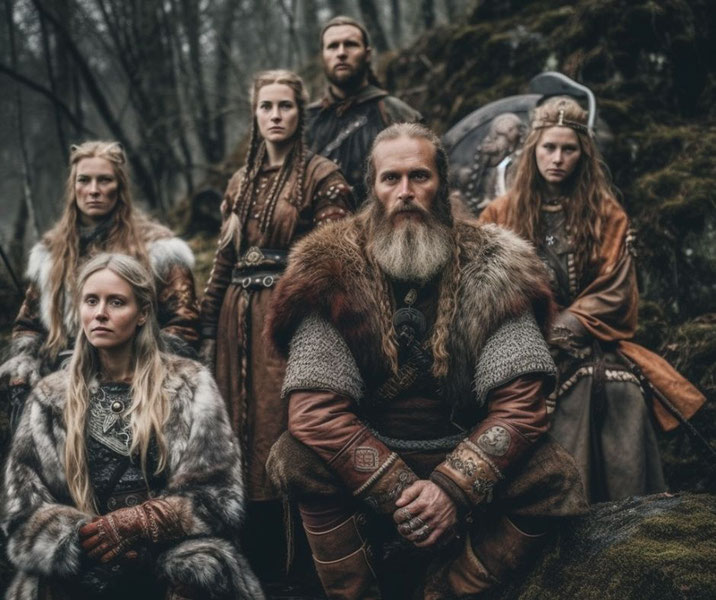
The Magyars, originally a nomadic people from the Ural-Altaic region, migrated into the Carpathian Basin at the end of the 9th century.
From there, they launched a series of raids across Europe, particularly targeting Central Europe and parts of Western Europe.
Their fast, horse-mounted attacks wreaked havoc on the regions they targeted. The Magyars' impact on Europe was significant; their raids disrupted existing power structures and contributed to the further decentralization of power, reinforcing the emerging feudal system.
By the late 10th century, they had settled in the Carpathian Basin, establishing the Kingdom of Hungary.
The Saracens, a term often used in the Middle Ages to refer to Muslim invaders, made significant inroads into Europe, particularly through Sicily and the Iberian Peninsula.
Their incursions began in the 7th century with the rapid expansion of the Islamic Caliphate, which brought large swathes of the former Roman Empire, including North Africa and the Middle East, under Muslim rule.
In the Iberian Peninsula, they established the Umayyad Caliphate, which became a major center of learning and culture in the Middle Ages. Their presence in Sicily and Southern Italy also left a lasting cultural and architectural imprint.
These invasions, while disruptive, also brought about significant changes and developments.
They facilitated cultural and economic exchange, led to the creation of new political entities, and contributed to the transformation of Europe's political landscape.
They were instrumental in shaping Europe as we know it today, serving as catalysts for change and adaptation in a world that was already in the midst of profound transformation following the fall of Rome.
The world would never be the same again...
The period following the fall of Rome was one of extraordinary change and adaptation, of conflict and fusion, and of the birth and development of the entities and structures that would shape the medieval world.
It was a time when the old world was recast into a new one, a world that, in turn, laid the foundations for the modern era.
This dramatic historical period serves as a compelling testament to humanity's resilience and capacity for reinvention in the face of monumental change.
What do you need help with?
Download ready-to-use digital learning resources
Copyright © History Skills 2014-2025.
Contact via email
With the exception of links to external sites, some historical sources and extracts from specific publications, all content on this website is copyrighted by History Skills. This content may not be copied, republished or redistributed without written permission from the website creator. Please use the Contact page to obtain relevant permission.





